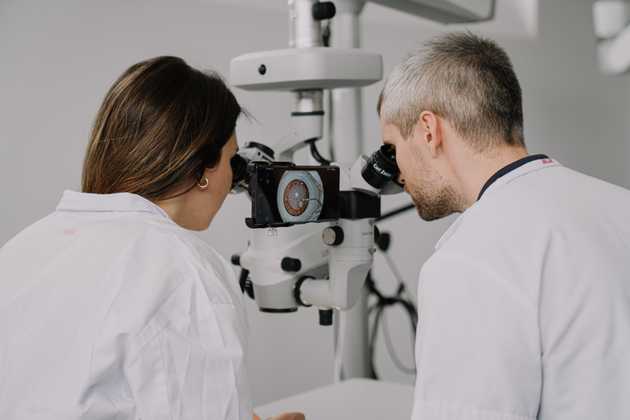Cataract surgery is one of the most performed ophthalmic surgeries. The learning curve to master the capsulorhexis step in this kind of surgery procedure is steep and demands time.
As global demographics change, so does the need for ophthalmologists who can perform this challenging surgery. Ophthalmologists in training look for new ways to train and improve their performance in the real world.
A recent study by Dr. Daniel Muth demonstrates that augmented reality (AR) technology increased accuracy in ophthalmic surgeries, which could translate into more efficient training for ophthalmic residents and surgeons.

AR and Smartphone-Enabled Microscopes
Together, the MicroREC optical system and the MicroART app allow surgeons in practice and in training to enhance visualization that can be used for localization or guidance purposes.
AR technology can enable more efficient surgical training by providing trainees with real-time visuals of procedures. This is made possible by innovations like MicroREC’s optical system, which connects a smartphone to a microscope or slit lamp and allows for the recording and capturing of high-quality images and videos.
Together, the MicroREC optical system and the MicroART app provide surgeons - in practice and in training - enhanced visualization that can be used for localization or guidance purposes, ultimately performing better surgeries and diagnoses. In addition, MicroREC and MicroART enables greater collaboration through sharing and streaming procedures in real-time.
These technologies help improve surgical precision and patient outcomes by allowing trainees and doctors to see and share fine details that would otherwise not be visible.
A Study on Capsulorhexis Training Methods
● Group 1 used MicroART – first AR smartphone application for capsulorhexis training, the MicroREC, and received real-time feedback during the procedure
● Group 2 received assistance from a surgeon
● Group 3 conducted the procedure with no support
Smartphone Slit Lamp Imaging – Usability and Quality Assessment
Read Dr. Muth’s study from the Department of Ophthalmology, University of Zurich
● MicroREC technology proved its feasibility and added value to the residents
● Group 1, the students who used MicroART, performed a higher quality capsulorhexis, especially in circularity
● The introduction of AR in the training workflow was well accepted and appreciated by participants
● Using MicroART, the procedure was completed as quickly as a classic wet lab procedure
Dr. Muth said, “When you train for cataract surgery, you optimize for the most complicated step. [MicroART and the MicroREC] make an expensive, complicated process very easy and affordable.”
Federico Acosta said, “This is the future of surgery and surgical training. You’re using real instruments and working with real microscopes. It gives you an edge.”
Reach out to schedule a demo of MicroART.







-1675d2368c6531b4186d0c38e40719e5.png)






